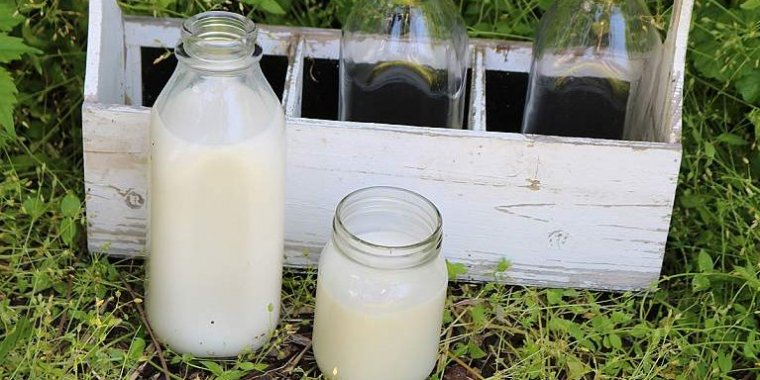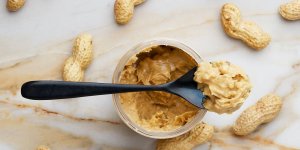| Health / Health News |
Infectious H5N1 influenza virus in raw milk rapidly declines with heat treatment
The amount of infectious H5N1 influenza viruses in raw milk rapidly declined with heat treatment in laboratory research conducted by scientists at the National Institute of Allergy and Infectious Diseases (NIAID), part of the National Institutes of Health.

Fresh natural milk on a farm. Given the 2024 multistate outbreak of H5N1 influenza among U.S. dairy cows, federal authorities recommend against drinking unpasteurized (raw) milk. Photo: National Institutes of Health
However, small, detectable amounts of infectious virus remained in raw milk samples with high virus levels when treated at 72 degrees Celsius (161.6 degrees Fahrenheit) for 15 seconds—one of the standard pasteurization methods used by the dairy industry.
The authors of the study stress, however, that their findings reflect experimental conditions in a laboratory setting and are not identical to large-scale industrial pasteurization processes for raw milk.
In late March 2024, United States officials reported an outbreak of highly pathogenic avian influenza virus called HPAI H5N1 among dairy cows in Texas.
To date, 95 cattle herds across 12 states have been affected, with three human infections detected in farm workers with conjunctivitis.
Although the virus so far has shown no genetic evidence of acquiring the ability to spread from person to person, public health officials are closely monitoring the dairy cow situation as part of overarching pandemic preparedness efforts.
Given the limited data on the susceptibility of avian influenza viruses to pasteurization methods used by the dairy industry, scientists at NIAID’s Rocky Mountain Laboratories sought to quantify the stability of H5N1 virus in raw milk when tested at different time intervals at 63℃ (145.4 degrees Fahrenheit) and 72℃, the temperatures most common in commercial dairy pasteurization processes.
The scientists isolated HPAI H5N1 from the lungs of a dead mountain lion in Montana. Then they mixed these viral isolates with raw, unpasteurized cow milk samples and heat-treated the milk at 63℃ and 72℃ for different periods of time.
The samples were then cell-cultured and tested to determine if live virus remained and if so, how much.
They found that 63℃ caused a marked decrease (1010-fold) in infectious H5N1 virus levels within 2.5 minutes and note that standard bulk pasteurization of 30 minutes would eliminate infectious virus.
At 72℃, they observed a decrease (104-fold) in infectious virus within five seconds, however, very small amounts of infectious virus were detected after up to 20 seconds of heat treatment in one out of three samples.
“This finding indicates the potential for a relatively small but detectable quantity of H5N1 virus to remain infectious in milk after 15 seconds at 72℃ if the initial virus levels were sufficiently high,” the authors note.
The scientists stress that their measurements reflect experimental conditions, should be replicated with direct measurement of infected milk in commercial pasteurization equipment and should not be used to draw any conclusions about the safety of the U.S. milk supply.
Additionally, a limitation of their study was the use of raw milk samples spiked with H5N1 virus, whereas raw milk from cows infected with H5N1 influenza may have a different composition or contain cell-associated virus that may impact heat effects.
The authors conclude that although gastrointestinal infections with HPAI H5N1 virus have occurred in several species of mammals, it remains unknown whether ingesting live H5N1 in raw milk could cause illness in people.
To date, the U.S. Food and Drug Administration concludes that the totality of evidence continues to indicate that the commercial milk supply is safe.
While laboratory benchtop studies provide important, useful information, there are limitations that challenge inferences to real-world commercial processing and pasteurization.
The FDA conducted an initial survey of 297 retail dairy products collected at retail locations in 17 states and represented products produced at 132 processing locations in 38 states. All of the samples were found to be negative for viable virus.
YOU MAY ALSO LIKE





